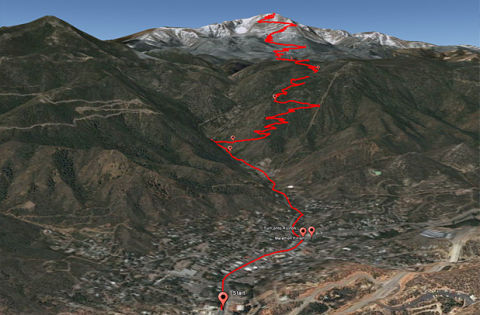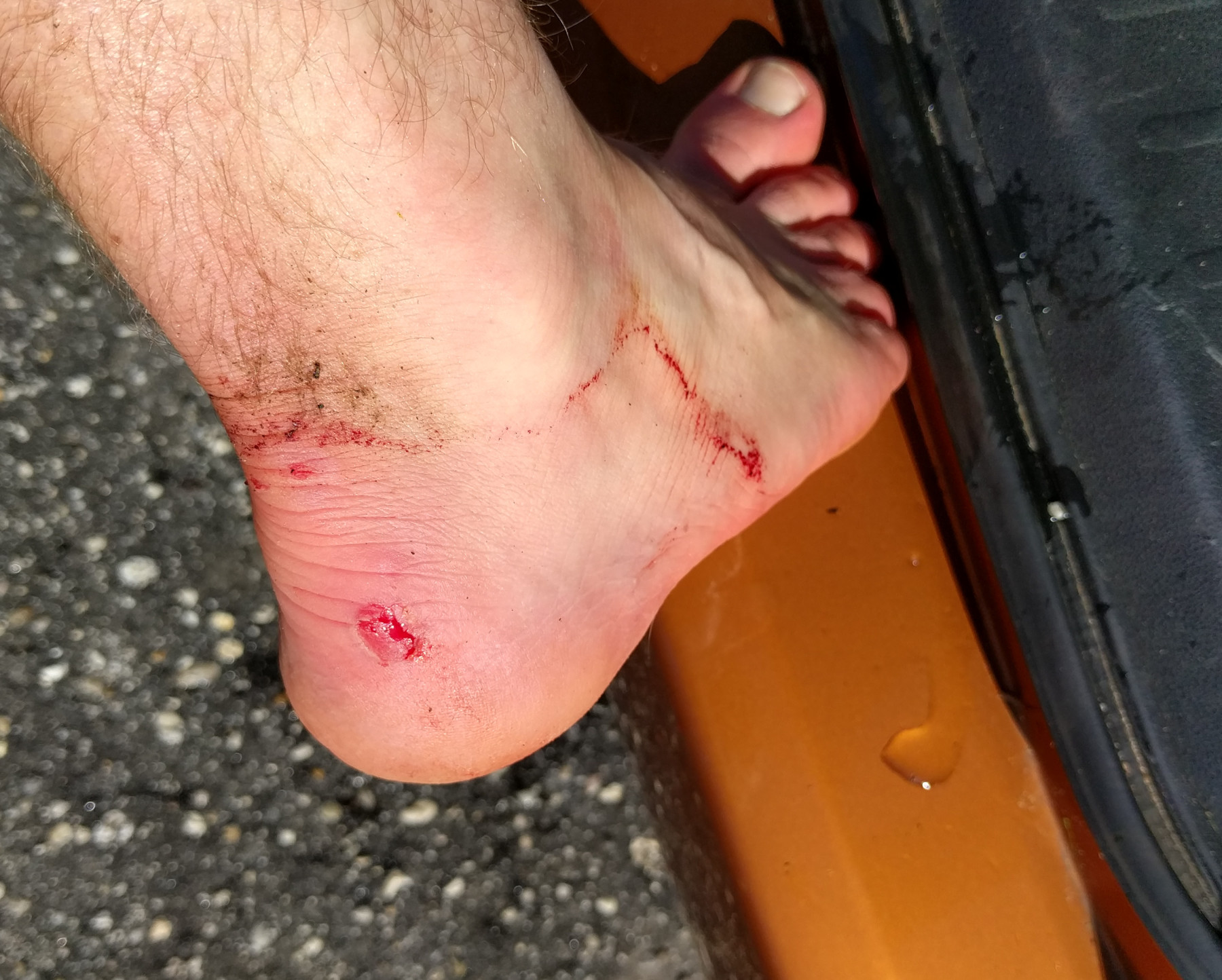Here’s an update on my training for my Pikes Peak run, yes I plan to run up Pikes Peak. Don’t worry there’s a trail.
First a quick recap on why it’s difficult to run up Pikes Peak:
a) It’s a mountain. A tall mountain. Barr Trail (the trail I plan to run up) starts at over 6,000ft elevation – where the negative effects of high altitude can be felt just doing everyday things. The summit is at over 14,000ft, where there’s much less oxygen in the air than at sea level and the train that takes people up to the summit only stays for about 30mins because of the effects. This is particularly challenging for me because I’ve never been at an altitude where I would feel the effects so I don’t know how bad they’ll be. A quick reminder of the mountain:
b) It’s about 12 miles at an 11% grade. Even without the effects of altitude running up an 11% grade is tough, so tough many race courses with 1 or 2 hills at 11% and maybe 1/2 mile long are billed as “very hilly”.
c) Unpredictable weather. The average temperature difference between the base and summit is about 40º F. Other logistical concerns include brining my own water and hoping it doesn’t snow. Seriously, there’s a chance of snow on the summit year round, and the average high in June is only 38º F.
**Training
**
My initial plan was to up my running volume, add hill repeats, add long bike rides, and add treadmill runs at an incline. After a couple weeks I am pretty happy with how it’s progressing, I’ve increased my running volume (more than doubled), added a hill repeats training session once a week, plan to do a couple longer bike rides this week and next week when the weather finally cooperates (it has been raining quite a bit). I even ran on the treadmill at an incline, once, for 20mins. It was horrible. Not only was it boring as only the treadmill can be, the incline made it hurt, and I was dripping sweat all over. I guess it wasn’t all that bad, but it’s much nicer to run outside. I’m happy with my progress so far and with about two solid weeks of training left before the trip I’m confident that if I can get used to or at least not collapse from the effects of altitude I can make the climb.
Hill Repeats
The hill repeats have been the most interesting added part of my training so far (there’s not much to say about longer runs other than they are longer), so I decided to add this section about them. Hill repeats are great for training, even for flat races, they stress your cardiovascular system and leg muscles (stress + recovery = improvements). They also help your leg muscles for climbing, which is pretty important for training to run up a mountain. The general idea is to find a long hill and run hard up the hill, like gasping for air hard, then jog easy back down, like barely faster than walking easy. I’ve been doing them at https://en.wikipedia.org/wiki/Sunken_Meadow_State_Park) which is where I used to run for cross country in high school. The cross country course has a famous hill named Cardiac Hill.
You can’t tell from the 5k course map, but the hill rises about 50-150ft depending on where you start and is about 1/10 to 1/3 of a mile, again depending on where you start. Very tame by Colorado mountain standards, but I’ve been running up and down it for the past month and it is formidable.
The hydration pack is good, comes with lots of pockets, and a 2L bladder for water. I’ve been using it for my hill repeat workouts and while I know it’s there it doesn’t get in the way. I don’t have anything to compare it to, but there are no problems I’ve encountered.
I’m also happy with the trail shoes, although again I don’t have anything to really compare them to other than my road shoes which are minimalist type Saucony Kinvaras. I probably should have taken pictures before I used them, but I didn’t so you get to see my dirty shoes – just be glad you don’t have to smell them.
Speaking of dirty/gross pictures the following pictures in this post contain blood so be forewarned.
Ok that should be enough space.
Last chance to turn back…
Blisters!
Blisters can sideline even the most well laid plans (see my
Ok so it wasn’t sweat, it was blood. Eek. That looks worse than it really was, here’s my foot after a quick rinse:
Not so bad after all. It hasn’t bled like that in subsequent runs and the insole hasn’t slipped around anymore so all is well. Except the state of my shoes, they’re filthy and blood stained now.
That’s it for my training update. Hopefully my next Pikes Peak post is a successful “race” report.







